#Xuande Emperor
Text

Mouse and Stone, Zhu Zhanji (Xuande Emperor), 1427
#art#art history#Asian art#China#Chinese art#East Asia#East Asian art#Imperial China#Zhu Zhanji#Xuande Emperor#Ming Dynasty#scroll#light color on paper#15th century art#Palace Museum
234 notes
·
View notes
Photo
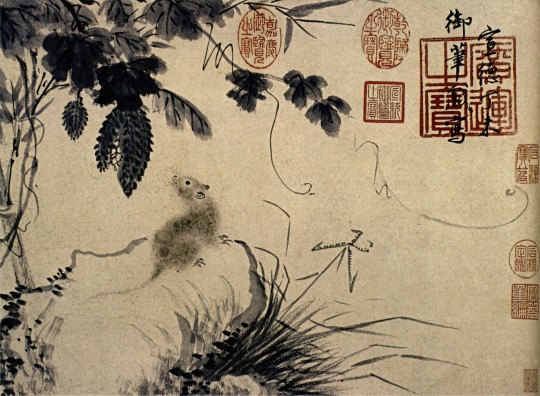
Zhu Zhanji (Xuande Emperor), Mouse and Stone, 1427
1 note
·
View note
Text
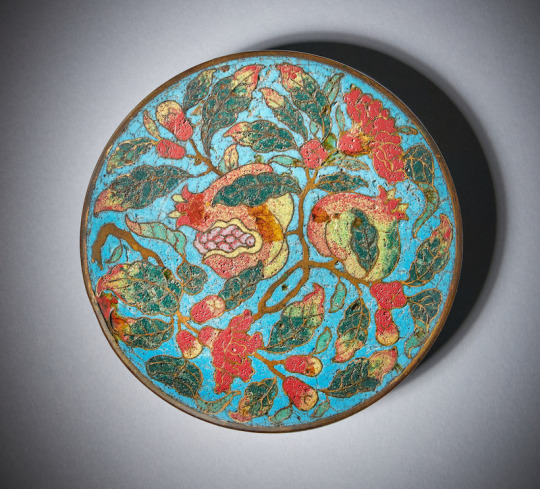


An exceptionally rare Chinese cloisonné ‘pomegranate’ box and cover, Xuande incised six-character mark and of the period (1426-1435).
An exceptionally rare Chinese cloisonné ‘pomegranate’ box and cover from the Ming period has been discovered in a dust-filled cabinet in the attic of a family home, where it had been stored and left untouched since the owner’s death in 1967. This important box bearing the incised six-character marks of Xuande, the fifth Emperor of the Ming Dynasty (1426-1435), was nestled in a dusty cabinet amongst other cloisonné pieces and it was only on close inspection many years later that it was found.
Courtesy Alain Truong
199 notes
·
View notes
Photo

ZHU ZHANJI (the Xuande Emperor)
Painting of two Saluki hounds, 1427-1428
789 notes
·
View notes
Text
Hi Producer (正好遇见你) Infodump
Disclaimer: I have no idea about the accuracy of the information shared in the drama, I'm merely transcribing for future reference purposes. Proceed with caution!
.
Ep 30-31: Ancient Makeup
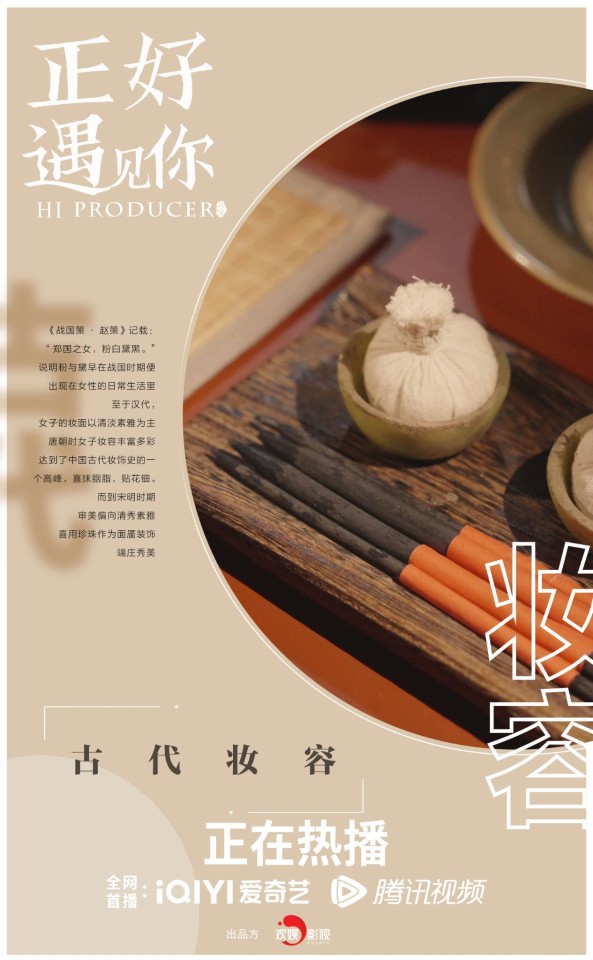

In "Strategies of Zhao" from "Zhan Guo Ce", women from Zheng wore makeup on their cheeks and brows. Cheek and brow makeup already existed in that era and were part of women's daily life. Men also used makeup.
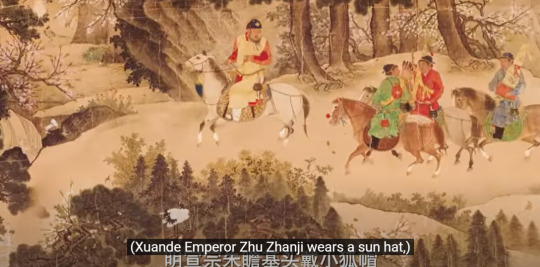
Xuande Emperor Zhu Zhanji wears a sun hat, pearl earrings, a military outfit with arrow sleeves, and a suit of yellow armor. How fashionable.
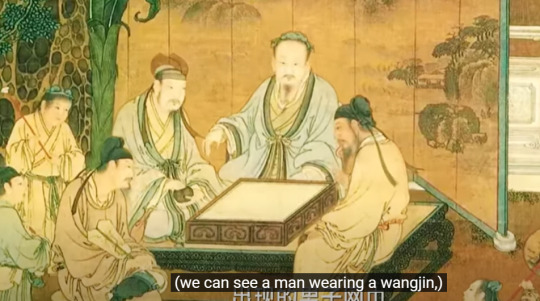
On this screen of 18 scholars [Qi Xiu Lei Gao], we can see a man wearing a wangjin, which was promoted by Emperor Zhu Yuanzhang. One day, Zhu Yuanzhang was on an anonymous trip to Shenle Temple. He saw a Taoist priest tie a wangjin under the lamp. Curious, he asked, "What might this be?"
Answered the Taoist priest, "It's a wangjin. Wrapped your hair with it and the hair shall remain tidy."
Zhu Yuanzhang was delighted. He thought the item bore the meaning of "unifying the land". He then decreed it be worn. According to "The History of Ming: Carriages and Clothing", all men of the Ming Dynasty, regardless of status, all wore a wangjin.
Shen Congwen made an inference after observing the colors of the outfits shown in "The Night Revels of Han Xizai", that it was produced between the fall of Southern Tang and the Chunhua era. Who can accomplish that now?
.
Recreating those makeup styles, the cultural meaning it carries, the social background behind the changes of outfit designs and makeup styles etc need to be paid attention to.
Wu Zetian's Peach Blossom Powder
youtube
Classic Makeup Restoration
youtube
.
"Hands as delicate as tender shoots, skin smooth and fair with shine. Neck slender like that of a swan, teeth white and lined-up perfectly.
A plump forehead and long thin curvy brows, a smile so enchanting, her eyes so alluring.")
In "Odes of Wei, the Classic of Poetry", the sung Princess Zhuang Jiang who was so graceful and gorgeous was the embodiment of the classical beauty of Chinese women. Over centuries, generations of women have pursued beauty tirelessly, leaving behind countless wonderful dreams created with poetry.
"Her waist is tied with a white silk stripe. Her ears are adorned with lustrous earrings. Her fingers are slim like the tips of a green onion. Her lips are red as if covered in vermilion."
That is the beauty of a woman's solemn makeup.
"Eyes filled with shyness. A faint smile with her red lips."
Such is the beauty of bashfulness.
"Mountains on the screens glitter with the morning sunshine, her fair hair on her fair skin is like a cloud over a snowy field. She lazily rises to paint her brows, and finally grooms after a long delay."
That is a woman's beauty at leisure.
"Her clothes flowy like clouds and her face gorgeous like blooming flowers. The morning dew blown by the spring breeze enriches the color of the blossom."
This is a woman's alluring beauty.
"Raindrops fall on her rosy cheeks, mingling with tears and her rouge."
This is the beauty of a woman's tearful countenance.
The beauty of Chinese women is reflected in the harmony and coordination of hairstyles, makeup, attire, footwear, and accessories. It forms a complete and systematic women's boudoir culture, leaving behind beautiful and captivating legends.
(Check out this gorgeous traditional style cosmetics chest btw😍)
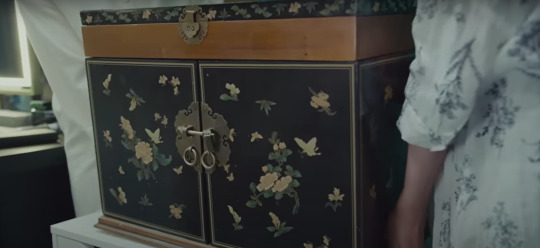
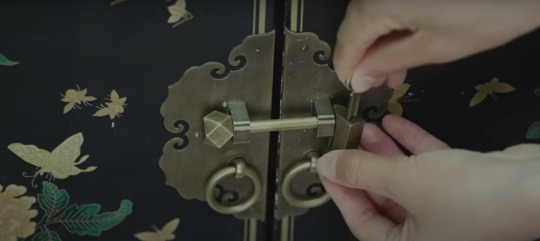



.
Documentary segment:
youtube
.
More Hi Producer posts
#cdrama#chinese drama#正好遇见你#Hi Producer#chinese history#traditional cosmetics#cosmetics#makeup#traditional chinese makeup
38 notes
·
View notes
Note
what do you think of the costumes from the drama Royal Feast/尚食 ? It's set in the kitchens of the ming dynasty. The higher ranking ladies in charge of food have a really interesting hairstyle, but I couldn't find anything about it
Firstly I think the costuming in this drama is very much in the repertoire of "dramas that use costumes from all over the Ming Dynasty anachronistically regardless of the actual time setting", so it isn't historically accurate by any measure. I'm sorry I can't be bothered to find the ladies you're talking about because this drama and stuff surrounding it annoy me to no end. The story is allegedly set between the Yongle and Xuande eras (1404-35) in the early Ming, but as always many of the costumes are taken from the late Ming and even the Qing. I shouldn't need to say this but the Ming Dynasty was long, and what people wore in 1404 obviously wasn't going to be the same as what they wore in 1620. Well, this drama doesn't care. This kind of anachronistic mishmash of Ming fashions was fresh and cool when Song of Youth did it first, because at the time the bar for costuming was so low and people were so starved of Ming representation that it was impressive for dramas to have costumes that have even the slightest twinge of connection to the Ming, but now I'm starting to see a trend and it's disturbing. If I'm watching something set in the early 15th century I want to see the early 15th century, not the 16th or 17th or even 18th for God's sake. I think the Chinese period drama industry needs to actually have standards now, because otherwise instead of improving the quality and accuracy of costuming, it's just going to replace guzhuang norms with a new but equally bullshit set of norms.
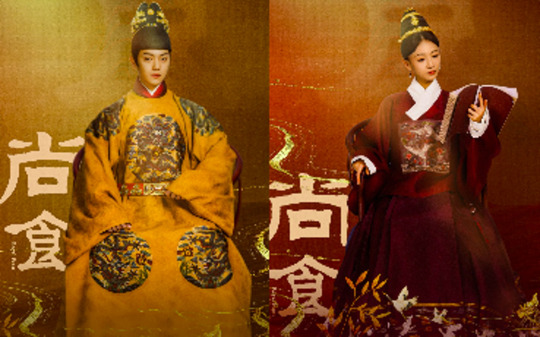
Looking at what the guy is wearing here, this kind of gunfu robe with colorful roundels and hat with the gold decorations were not seen on formal portraits of emperors until Emperor Longqing (reign 1567-72) 150+ years into the future. This is already enough for me to rest my case.

I strongly urge some of these costumes to go back to their respective corners of the Ming Dynasty since few of them are from between 1404 and 1435. Aside from the anachronism, some of the costumes are badly constructed and come from nowhere in the Ming. It's repeatedly mentioned on online sources that the costumers referenced 明宪宗元宵行乐图, which I find hilarious that they think it's a good thing because that artwork is from 1485, 50 years in the future (not to mention that the full skirt look of that era was distinct and not existent earlier).
@guzhuangheaven posted a gifset from this drama that looks almost 100% 18th century (Qianlong era, as always. I'm not even surprised at this point)
On top of the bad costuming, the producer Yu Zheng again does what he does best and tries to play the nationalism card by picking fights with Korean people online (whether they are genuine Koreans or hired actors/photoshopped screenshots I will never know) who claimed some elements of the costuming and plot plagiarized iconic 2003 Korean drama Dae Jang Geum. I don't even care whether it was true, it's this attitude of always trying to artificially manufacture hatred against Koreans to make himself look good. It's like he's much less concerned with making an actually good drama than generating clout. I am so sick and tired of his shenanigans I just want a drama with decent, non time travelling costumes is that too much to ask for.
64 notes
·
View notes
Text
The Ravages of Time episode 3
So at the end of this card it says “excerpt from “The Records of the Three Kingdoms” – biography of Liu Bei. “The Records of the Three Kingdoms” does have a Liu Bei chapter, but it is titled “Biography of the Former Lord” (and in the translation below he will be addressed as such, according to the original source as well as the text on the card in the donghua). There is, however, a computer game titled “The Records of the Three Kingdoms, Biography of Liu Bei”. As you can imagine, that made my search a little more complicated than it had to be.
“The Records of the Three Kingdoms” has never been fully translated into English, but there were plans to do so, that were regrettably discontinued. Still, William Gordon Crowell, who was working on the project, kindly made the otherwise unpublished completed parts of the translation public, along with his translator’s notes.
The donghua card presents an abridged version of the opening paragraphs of the chapter; I took the liberty to edit Dr. Crowell’s translation to fit the card text as well as for general readability or to bring them in accordance with the terminology I use in my other translations. I have omitted most of the notes except for the explanation on Liu Bei’s looks; I suppose the details on geography and personas mentioned there will be of little interest to most, but if you want to know more, I encourage you to look into the full translation – it is available for free and easily googlable.
Episode 3

From historical records on Liu Bei
The Former Lord was surnamed Liu and had the given name of Bei and the courtesy name Xuande. He was a native of Zhuo prefecture in Zhuo commandery, and he was the descendant of a son of Emperor Jing of the Han, Prince Jing of Zhongshan [Liu] Sheng.
The Former Lord's grandfather Xiong and his father Hong served in provincial and commandery offices. Xiong was recommended as filially pious and incorrupt, and he rose to become prefect of Fan in Dong commandery. When the Former Lord was young, he was left without a father. With his mother he wove mats to make a living. In his youth, when the Former Lord would play beneath a tree with other small children from his clan, he would say, “I must ride in this feather-covered chariot. His uncle Zijing said to him, “Don't talk so foolishly! You'll bring destruction on our house!”
When he was 15, his mother sent him to study. With his clansman Liu Deran and Gongsun Zan of Liaoxi he became a disciple of the former grand administrator of Jiujiang commandery, Lu Zhi who was from the same commandery. Liu Deran's father, Yuanqi, frequently gave the Former Lord material support. Yuanqi's wife said, “Each has his own family. How can you regularly do this?” Yuanqi replied, “This boy is in our clan, and he is an extraordinary person.”
The Former Lord did not enjoy studying. He liked dogs and horses, music, and dressing in fine clothing. He was 7 chi 5 cun (173 cm) tall, and his hands hung down to his knees. He was able to look back and see his own ears [1]. Humble before good people, he did not manifest his happiness or anger in his look. He enjoyed associating with braves, and in his youth he fought and hung out with them. The great merchants from Zhongshan, Zhang Shiping and Su Shuang, had riches of several thousands in gold. They sold horses, and they made a circuit through Zhuo commandery. They happened to see Liu and were struck by him, so they presented him with much money and wealth. With this, the Former Lord was able to assemble a group of followers.
At the end of the reign of Emperor Ling, the Yellow Turbans rose up, and every province or commandery called up righteous armies. The Former Lord led his adherents, and under Colonel Zou Jing attacked the Yellow Turban bandits with distinction. He was appointed commandant of Anxi.
– excerpt from “Records of the Three Kingdoms” – Biography of Liu Bei
[1] These physical idiosyncrasies were thought perhaps to be signs that Liu Bei had been destined to be ruler. Miyakawa Hisayuki has suggested that this description of the large ears and long arms may show the influence of Buddhist iconography from the sutras that had recently arrived in China. The size of Liu's ears, at least, appears not to have been a literary invention, for Lü Bu referred to him as the “big-eared boy.” “Looking back” and being able to see his own ears perhaps means they could be seen with his peripheral vision. The “braves” were ruffians with a code of honor, albeit one at odds with officially sanctioned moral values. Generally viewed by the government as potential threats to the social order, they were often considered heroes by the populace.
And into the spoilers we go!
Shuijing villa - Shuijing means bright, can be used in the sense of a person's brilliance. Literally means "bright as a mirror". The villa here refers specifically to a mountain villa.
I'm afraid there isn't much I can say about the Liu Bei and his companions in the context of the coalition against Dong Zhuo. It is for sure known that they participated in the campaign, but that's about it. The Romance of the Three Kingdoms popularized some fictional events of it, like the 3-vs-1 fight of the trio against Lü Bu, but I'm not sure if those will be included in this donghua. Liu Bei is described as a cunning tactician though, so I can imagine the donghua scenes happening.
Still, I'll give a bit more background info on all three. Liu Bei, Guan Yu and Zhang Fei are probably the most famous example of sworn brothers. Around the time of the Yellow Turban rebellion (more on that on another episode) they gave the famous oath in the peach garden - or at least, so the legends and "The Romance of the Three Kingdoms" say. The actual chronicles only mention the three were "as close as brothers", but the idea is still firmly ingrained in the collective conscious. There are even temples dedicated to the three of them - lit. called "Temples of the Three Righteous".
The above text only mentions he helped his mother make straw mats, but in the cut part shoes are also mentioned; as such, Liu Bei is sometimes worshiped as a god of shoemakers.
Largely thanks to the novel, Liu Bei is commonly regarded as an example of a benevolent and humane ruler, because of the author's preference for him. Considering that The Ravages of Time is mainly considering Sima Yi's point of view (and Liu Bei and Sima Yi will later lead rivaling kingdoms) I was actually rather surprised by the rather sympathetic portrayal of him in the donghua.
Still, while Liu Bei's political decisions and ruling philosophy can be discussed at length, there is no doubt that his choice of companions caused him trouble more than once.
Liu Bei was considered the eldest of the three brothers; the second was Guan Yu (courtesy name Yunchang). His life has been even more glorified than Liu Bei's - and since the Sui dynasty (581-618) he's been considered a deity. In fact, to this day, he is worshiped both in Buddhism and Taoism, as well as respected in other philosophies and religions, to say nothing of the Chinese folk tradition.
Still, despite this truly overwhelming veneration from pretty much all the following dynasties, the records say that despite his righteousness, he was "unrelenting and conceited", which proved to be his downfall..
Finally, the third brother was Zhang Fei (courtesy name Yide), whose main shortcomings - his quick temper and brutality - are the things he's most well-known for, and in a lot of ways he can be seen as the opposite of Guan Yu. While there are accounts of him composing poetry in the middle of the battle, it is by far overshadowed by his cruelty towards his soldiers and the fights he got into, sometimes dragging his sworn brothers into trouble as well.
(Just to complete the picture, yes, Zhang Fei is also sometimes worshiped along with Guan Yu.)
Regardless of all that, both Guan Yu and Zhang Fei were regarded as mighty warriors "worth a thousand men", as well as loyal followers of Liu Bei's.
---
Some final thoughts - it definitely feels like the story is playing up the future main players to keep the cast a little more manageable and maybe to put the more recognizable faces in early. Also the extra drama! It's definitely fun, so I'm not complaining XD
5 notes
·
View notes
Photo

The Ming emperor Xuande plays chuiwan, a game quite similar to golf, ca. 1430. Chuiwan involved hitting a ball with a club into a sunken goal. It was played in China for 500 years, before fading away during the Qing Dynasty.
{WHF} {HTE} {Medium}
49 notes
·
View notes
Text

"Two Saluki Hounds" by Zhu Zhanji (the Xuande Emperor)
2 notes
·
View notes
Photo

Empress Xiaogongzhang (孝恭章皇后; c. 1399 – 26 September 1462), of the Sun clan, was a Chinese empress consort of the Ming dynasty, married to the fifth Ming emperor, the Xuande Emperor. She was mother of Zhu Qizhen, Emperor Yingzong.
#Empress Xiaogongzhang#Ming dynasty#Sun clan#XIV century#XV century#people#portrait#paintings#art#arte
6 notes
·
View notes
Note
Query: on names, does that mean that in something like Dynasty Warriors after Liu Bei declares himself emperor, instead of calling him “Lord Liu Bei” Zhuge Liang and co ought to be calling him “His Imperial Majesty”?
The English version of DW ignores basically all of the Han-era name rules in the interest of clarity, which is probably for the best.
One always referred to their superiors using appropriate titles. Using someone's given name (Bei) indicated that you were their superior. Using someone's style/courtesy name indicated that you were their social equal. (Related to this, the emperor could not be called by name because he had no superiors or equals.) One might allow very close friends who were also subordinates to use one's style/courtesy name. (Also one always referred to family members by their relation to you 'elder brother' 'older cousin' etc.)
So very close friends (like Zhang Fei, Guan Yu, and Jian Yong) might have been able to get away with calling Liu Bei by his style, Xuande. Sun Quan could probably have been able to get away with calling him Liu Bei. To all of those who served under him, though, he would have been referenced with the highest appropriate title. This would be very confusing for Dynasty Warriors so they choose to just ignore it.
8 notes
·
View notes
Text
International Known Queen & Empress Dowagers (1/?)
Empress Dowager Sun

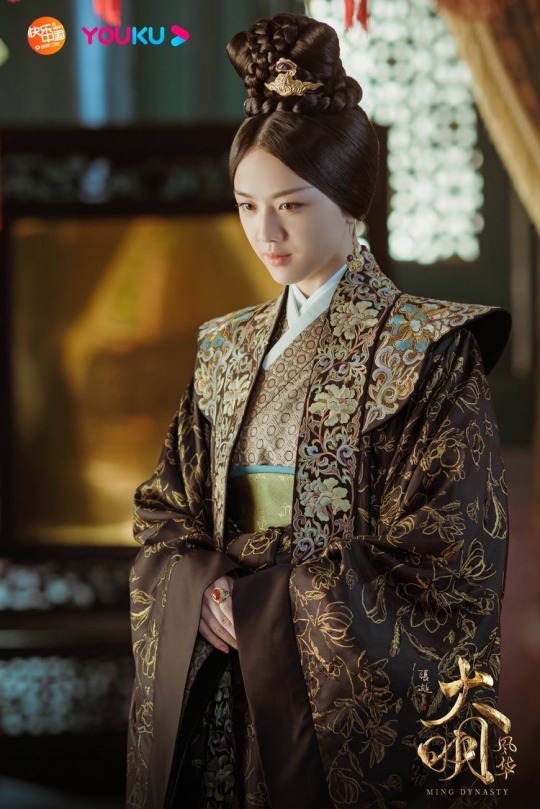
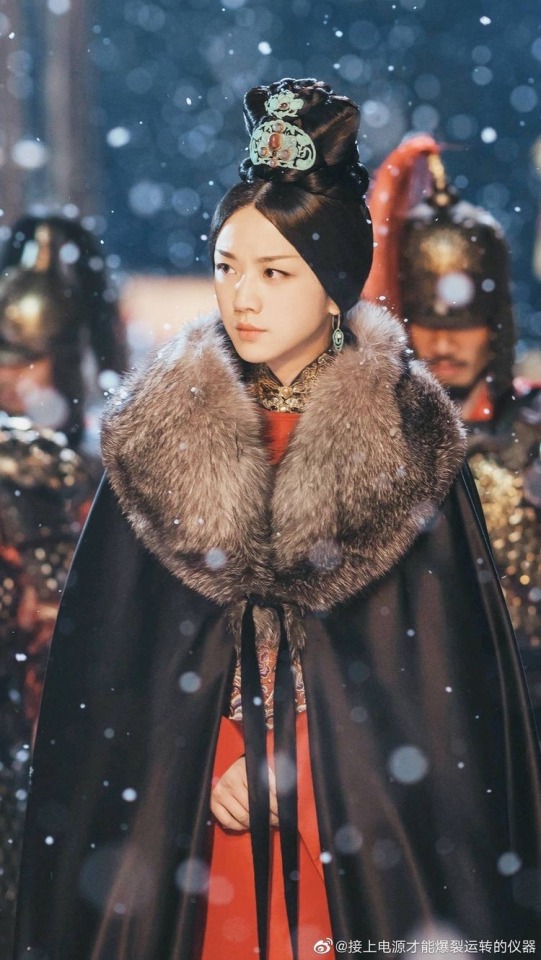

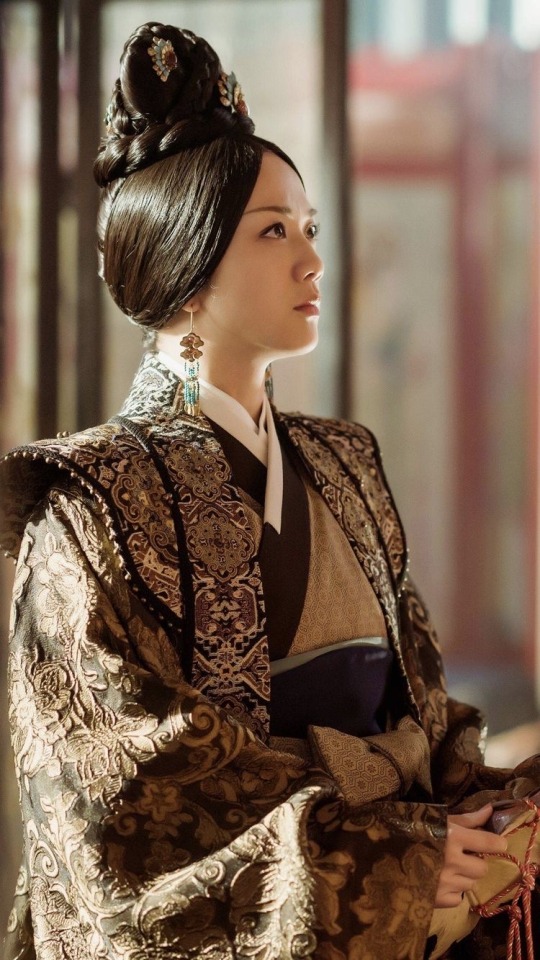



Daughter of Sun Zhong and Dong Yuanzhen
Empress of Zhu Zhanji (Xuande Emperor) and Empress Dowager of Zhu Qizhen (Yingzong Emperor)
Mother of Zhu Qizhen (Yingzong Emperor) and Princess Changde
Grandmother of Zhu Jianshen (Chenghua Emperor), Zhu Jianlin (Prince Zhuang of De), Zhu Jianshi, Zhu Jianchun (Prince Dao of Xu), Zhu Jianshu (Prince Huai of Xiu), Zhu Jianze (Prince Jian of Chong), Zhu Jianjun (Prince Jian of Ji), Zhu Jianzhi (Prince Mu of Xin), Zhu Jianpei (Prince Zhuang of Hui), Princess Chongqing, Princess Jiashan, Princess Chun'an, Princess Chongde, Princess Guangde, Princess Yixing, Princess Longqing, and Princess Jiaxiang
18 notes
·
View notes
Text
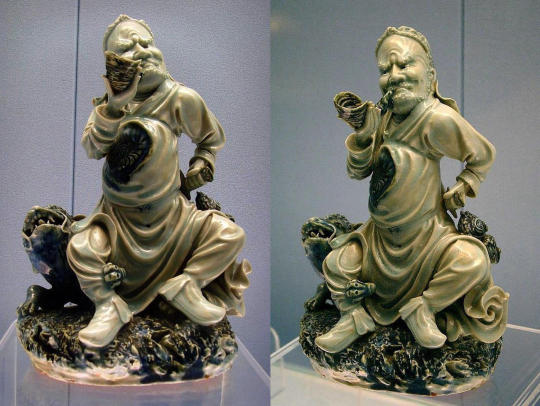
MWW Artwork of the Day (8/12/23)
Ming Dynasty, Wanli Reign (China, 1572-1620)
Man, blowing a conch, seated on an animal (c. 1600)
Jingdezhen ware, underglaze blue ceramic statue
The Shanghai Museum
The Ming Dynasty saw an extraordinary period of innovation in ceramic manufacture. During the Xuande reign (1425–35), a technical refinement was introduced in the preparation of the cobalt used for underglaze blue decoration. Prior to this the cobalt had been brilliant in color, but with a tendency to bleed in firing; by adding a manganese the color was duller, but the line crisper. Xuande porcelain is now considered among the finest of all Ming output. Enameled decoration was perfected under the Chenghua Emperor (1464-1487), and greatly prized by later collectors. Indeed by the late sixteenth century, Chenghua and Xuande era works (especially wine cups) had grown so much in popularity, that their prices nearly matched genuine antique wares of Song or even older.
1 note
·
View note
Text
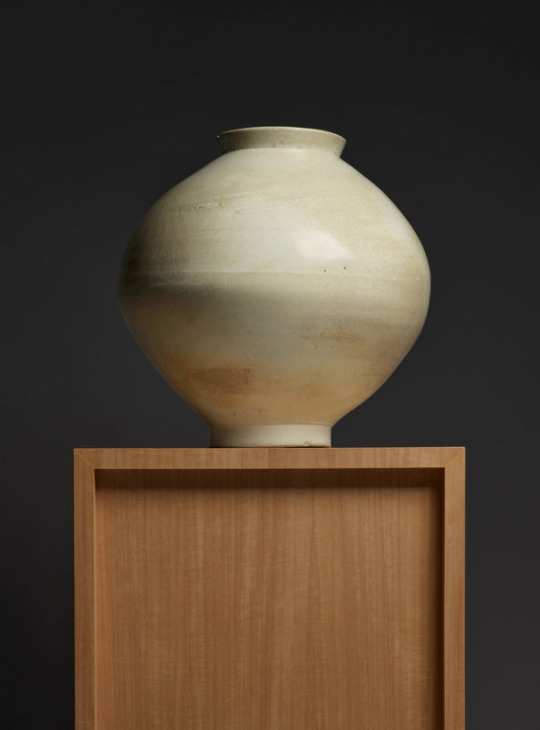
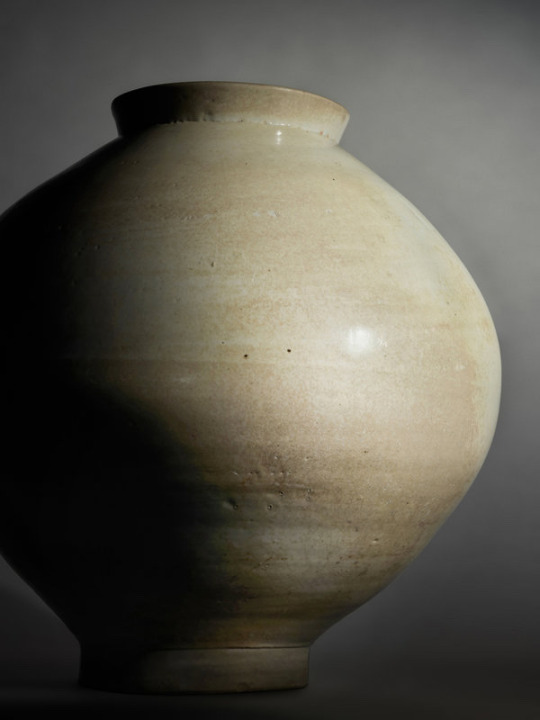

An important white-glazed moon jar, Joseon dynasty, late 17th-early 18th century.
“Like the moon of the 13th or 17th day”
A large white-glazed moon jar universally admired for its luminous white porcelain surface, elegant, gravity-defying proportions, and charming idiosyncrasies, the evocatively named moon jar (dalhangari) epitomizes the nuanced, natural beauty acclaimed in Korean ceramics. Completely unique to Korea, moon jars were produced for a short amount of time during the Joseon dynasty (1392-1910) in the 17th and 18th centuries, likely for storage of grain or liquid. The jar’s deceptively simple form, plain surface, and striking materiality led to its “rediscovery” in the 20th century by art historians and artists alike. Indeed, the term “moon jar” is a modern moniker attributed to the Korean artist Kim Whan-ki (1913-1974), coined around the 1940s when Kim and other artists wrote lyrically about the vessel. In the Joseon period, it was simply referred to as a “large white ceramic jar” or “round jar” (wonho 圓壺).[1] From its humble beginnings as a utilitarian vessel, the moon jar has transcended geographic and cultural boundaries to become one of the most iconic and influential works of art in modern times, equally significant in the history of Korean ceramics, the development of modern studio pottery, and global art history.
Joseon Porcelain in the 17th and 18th century
Porcelain was introduced to Korea during the Yuan (1279-1368) and early Ming (1368-1644) dynasties in China, exemplified by blue and white vessels decorated with dragons given by the Ming Xuande Emperor (r. 1425-1435) to the Joseon King Sejong (r. 1418-1450). Soon, porcelain was made domestically in official court-sponsored kilns at Bunwon, near the capital city of Hanyang (present-day Seoul). These kilns supplied porcelains to the royal court for use in daily life and state rituals. The production of these vessels was highly regulated, with government-appointed supervisors overseeing the selection of raw materials and ceramic production. From its inception, porcelain was regarded as a material for Joseon elites—sumptuary laws restricted the use of porcelain to the court, and those who violated this rule were punished.[2]
Courtesy Alain Truong
11 notes
·
View notes
Photo

ZHU ZHANJI (the Xuande Emperor)
Three Goats, an Auspicious Start (to the New Year)
373 notes
·
View notes
Text
Hi Producer (正好遇见你) Infodump
Disclaimer: I have no idea about the accuracy of the information shared in the drama, I'm merely transcribing for future reference purposes. Proceed with caution!
.
Ep 14: Incense (Part 2)
Incense Burners

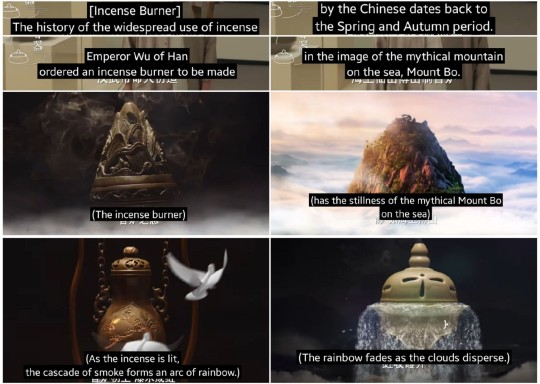


.
Incense Making
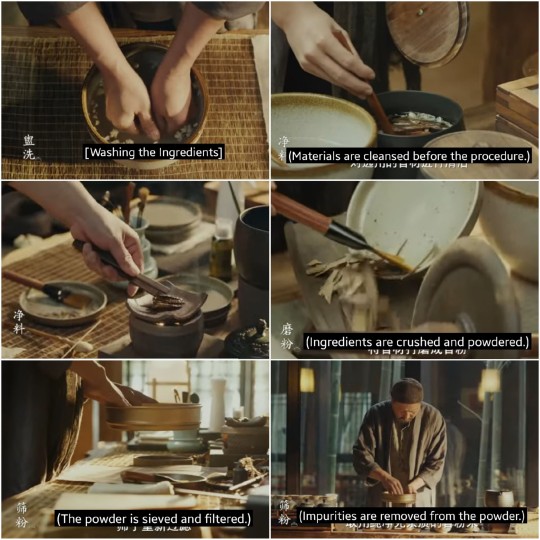
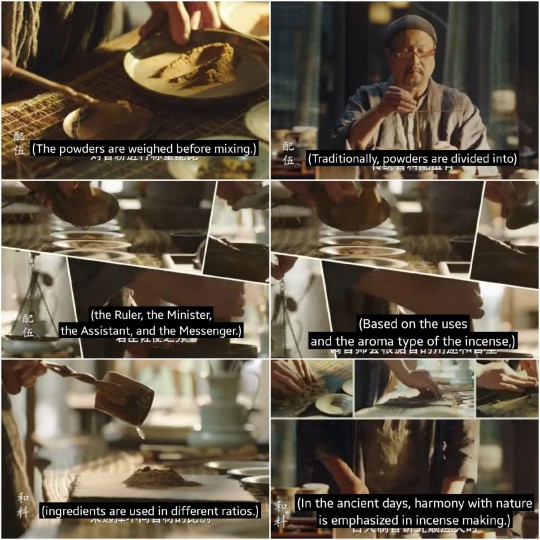

.
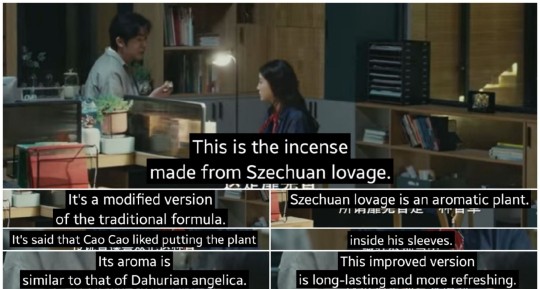
.
The Love Story of Empress Sun and Xuande Emperor of Ming Dynasty

Theirs is a unique tale, because Empress Sun was handpicked by Xuande Emperor's parents as a good candidate for their son's consort, who was then the Imperial Grandson. She was brought to palace and raised by his mother, then the Crown Princess when she was a young girl which lead to her and future Emperor Xuande growing up together. For some reason she wasn't picked as the Crown Princess in the end anyway, and ended up being a Noble Consort (but was later promoted to Empress). The drama tells this story but it's not particularly tied to the Episode Topic: Incense, so I'm only sharing the trivia I thought was interesting below.

Part 2
.
More Hi Producer posts
4 notes
·
View notes